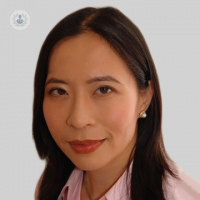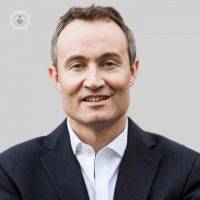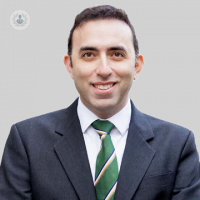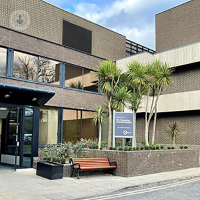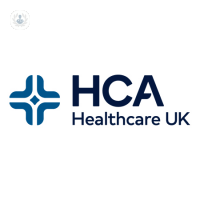What is a chalazion?
A chalazion is a benign, painless bump or nodule that forms on the upper or lower eyelid when a meibomian gland becomes blocked. Meibomian glands are oil-producing glands located in the eyelids, and they secrete oils that help lubricate the surface of the eye and prevent the tears from evaporating too quickly. When one of these glands becomes blocked, it can lead to the accumulation of oil, inflammation, and the formation of a chalazion. Chalazion are typically characterised by:
Swelling: A chalazion can cause noticeable swelling on the eyelid, usually appearing as a small, painless lump or bump.
Redness: The affected area may become red or irritated.
Tenderness: Unlike a stye (a similar-looking eyelid bump caused by a bacterial infection), a chalazion is usually not painful.
Blurred vision: In some cases, if the chalazion becomes large enough or causes distortion of the eyelid, it may temporarily affect vision.
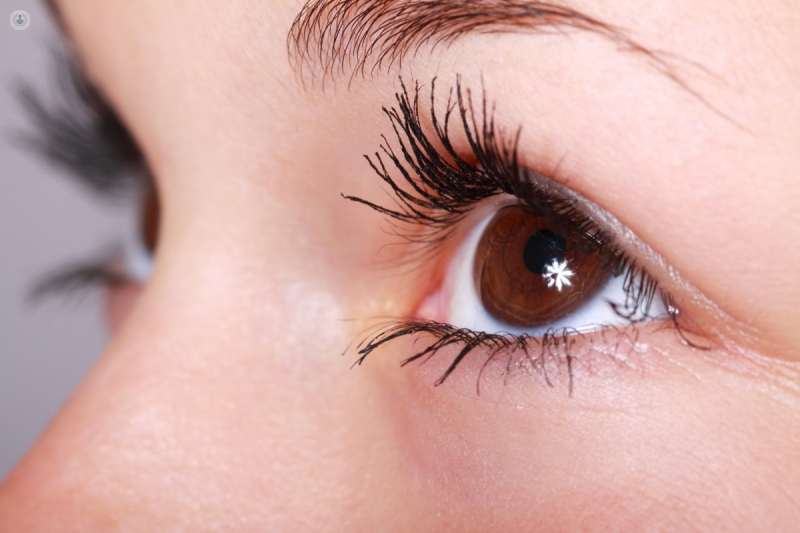
Conservative treatments
You can often help treat a chalazion yourself with heat compression treatment. This involves soaking a cotton wool pad in hot water and gently pressing it against your eyelid, taking care not to get hot water in your eye. The pressure and heat can sometimes cause the chalazion to release its content.
If this hasn’t worked, your ophthalmologist can prescribe you antibiotics to reduce any inflammation.
Surgical treatment
If the treatments above haven’t worked, surgery may be required.
Surgery to remove chalazion is quick and can be carried out at an eye clinic. You’ll be asked to lie down on a couch and you will be given eye drops to numb the area around your eye. The surgeon will then make a very small incision to remove the chalazion from the eyelid.
After the procedure your eye will be bruised for a few days, and you’ll need to take antibiotic ointments a few times throughout the day to make sure that the eye doesn’t become infected. The risks of complications from surgery are very low and any complications that do occur will be minor.
05-26-2017 09-27-2023Chalazion
Miss Vickie Lee - Ophthalmology
Created on: 05-26-2017
Updated on: 09-27-2023
Edited by: Kate Forristal
What is a chalazion?
A chalazion is a benign, painless bump or nodule that forms on the upper or lower eyelid when a meibomian gland becomes blocked. Meibomian glands are oil-producing glands located in the eyelids, and they secrete oils that help lubricate the surface of the eye and prevent the tears from evaporating too quickly. When one of these glands becomes blocked, it can lead to the accumulation of oil, inflammation, and the formation of a chalazion. Chalazion are typically characterised by:
Swelling: A chalazion can cause noticeable swelling on the eyelid, usually appearing as a small, painless lump or bump.
Redness: The affected area may become red or irritated.
Tenderness: Unlike a stye (a similar-looking eyelid bump caused by a bacterial infection), a chalazion is usually not painful.
Blurred vision: In some cases, if the chalazion becomes large enough or causes distortion of the eyelid, it may temporarily affect vision.

Conservative treatments
You can often help treat a chalazion yourself with heat compression treatment. This involves soaking a cotton wool pad in hot water and gently pressing it against your eyelid, taking care not to get hot water in your eye. The pressure and heat can sometimes cause the chalazion to release its content.
If this hasn’t worked, your ophthalmologist can prescribe you antibiotics to reduce any inflammation.
Surgical treatment
If the treatments above haven’t worked, surgery may be required.
Surgery to remove chalazion is quick and can be carried out at an eye clinic. You’ll be asked to lie down on a couch and you will be given eye drops to numb the area around your eye. The surgeon will then make a very small incision to remove the chalazion from the eyelid.
After the procedure your eye will be bruised for a few days, and you’ll need to take antibiotic ointments a few times throughout the day to make sure that the eye doesn’t become infected. The risks of complications from surgery are very low and any complications that do occur will be minor.
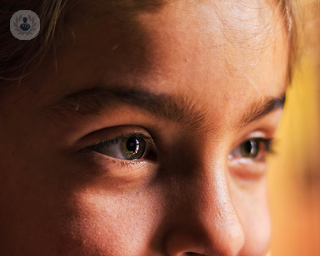

What causes puffy eyes?
By Miss Vickie Lee
2024-12-26
We can all get puffy eyes from time to time. However, when it becomes a long-term problem or affects your vision, it’s time to consult a specialist. Expert ophthalmologist Miss Vickie Lee explains what causes puffy eyes and how to get rid of them. See more
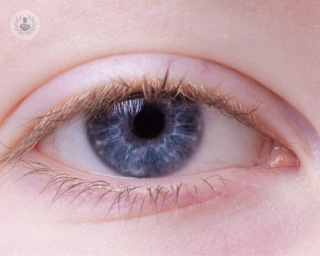

FAQs on Chalazions
By Mr Colin Vize
2024-12-26
We spoke with Mr Colin Vize, a leading ophthalmologist based in East Yorkshire, to discuss the effectiveness of chalazion surgery. In this latest article, we find out the answers to some frequently asked questions on this topic. Find out whether chalazions are dangerous and whether surgery to treat them is painful. See more


Chalazion: a complete guide
By Mr Daniel Ezra
2024-12-24
Our eyelids are made up of lots of different types of tissue, which can each give rise to varying forms of eyelid lumps. By far the most common type of eyelid lump is the chalazion. Mr Daniel Ezra, a top ophthalmic surgeon, gives a summary of chalazion lumps and how they can be treated. See more
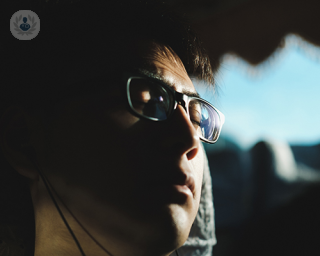

What causes a chalazion?
By Miss Vickie Lee
2024-12-23
A chalazion or meibomian cyst is a type of swelling that affects the eyelid. As with anything that affects the eye, such as swelling can be worrying, especially if it hardens. What causes a chalazion and why do they harden? Expert ophthalmologist Miss Vickie Lee explains. See more
Experts in Chalazion
-
Mr Jimmy Uddin
OphthalmologyExpert in:
- Thyroid eye disease
- Blepharoplasty
- Oculoplastics
- Watery eyes
- Chalazion
- Eyelid cancer
-
Mr Niaz Islam
OphthalmologyExpert in:
- Cataracts
- Chalazion
- Diabetic retinopathy
- Macular degeneration (AMD)
- Retina
- Watery eyes
-
Mr Richard Scawn
OphthalmologyExpert in:
- Oculoplastics
- Blepharoplasty
- Ptosis (droopy eye)
- Watery eyes
- Chalazion
- Blepharitis
-
Mr Daniel Ezra
OphthalmologyExpert in:
- Facial fat transfer
- Oculo-facial plastic and cosmetic surgery
- Mid face lift
- Blepharoplasty
- Brow lift
- Chalazion
-
Miss Vickie Lee
OphthalmologyExpert in:
- Ptosis (droopy eye)
- Oculoplastics
- Chalazion
- Thyroid eye disease
- Watery eyes
- Dry eye
- See all

The Chiltern Hospital - part of Circle Health Group
The Chiltern Hospital - part of Circle Health Group
London Rd, Great Missenden HP16 0EN
No existe teléfono en el centro.
By using the telephone number provided by TOP DOCTORS, you automatically agree to let us use your phone number for statistical and commercial purposes. For further information, read our Privacy Policy
Top Doctors

The Clementine Churchill Hospital - part of Circle Health Group
The Clementine Churchill Hospital - part of Circle Health Group
Sudbury Hill, Harrow HA1 3RX
No existe teléfono en el centro.
By using the telephone number provided by TOP DOCTORS, you automatically agree to let us use your phone number for statistical and commercial purposes. For further information, read our Privacy Policy
Top Doctors

The Lister Hospital - part of HCA Healthcare
The Lister Hospital - part of HCA Healthcare
Chelsea Bridge Road, London
No existe teléfono en el centro.
By using the telephone number provided by TOP DOCTORS, you automatically agree to let us use your phone number for statistical and commercial purposes. For further information, read our Privacy Policy
Top Doctors
-
The Chiltern Hospital - part of Circle Health Group
London Rd, Great Missenden HP16 0EN, Great MissendenExpert in:
- Allergies Ophthalmological
- Clinical analysis
- Cancer
- Breast Cancer
- Skin Cancer
- Prostate Cancer
-
The Clementine Churchill Hospital - part of Circle Health Group
Sudbury Hill, Harrow HA1 3RX, West LondonExpert in:
- Abdominal ultrasound
- Abdominoplasty
- Acne
- Allergies bronchopulmonary
- Allergies nose and ears
- Allergy Dermatitis
-
The Lister Hospital - part of HCA Healthcare
Chelsea Bridge Road, London , Central LondonExpert in:
- Cancer
- Cardiology
- Orthopaedic surgery
- Pregnancy
- Physiotherapy
- Women’s health
- See all
- Most viewed diseases, medical tests, and treatments
- Visual impairment
- Diabetic retinopathy
- Retina
- Presbyopia
- Nystagmus
- Myopia
- Hyperopia (farsightedness)
- Eye examination
- Blepharitis
- Astigmatism
